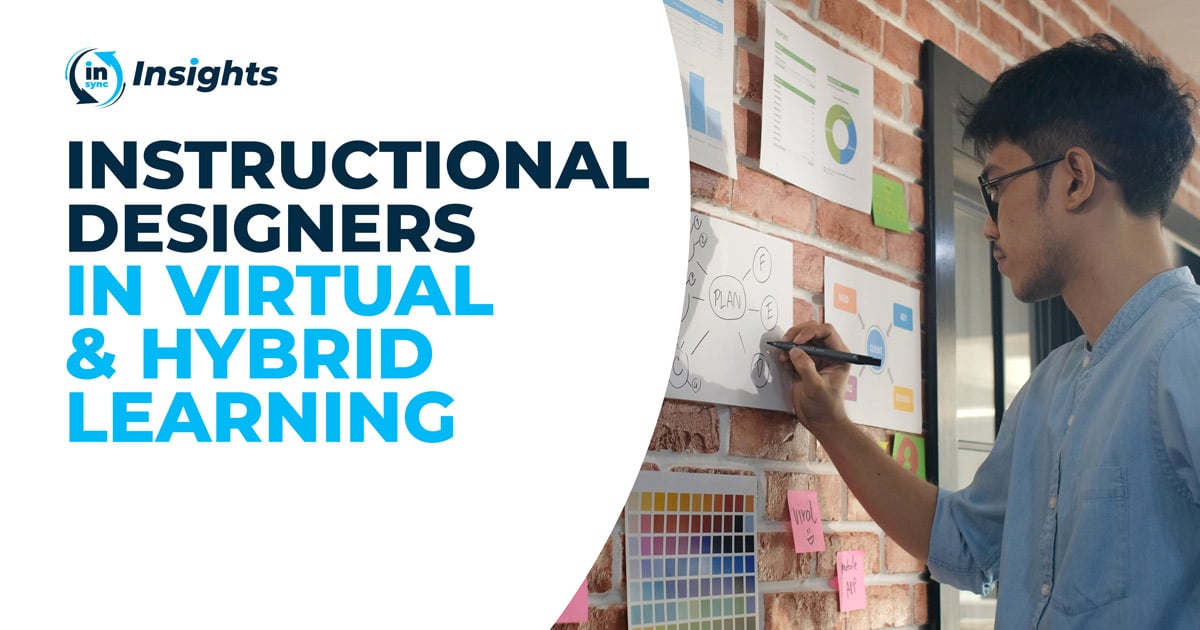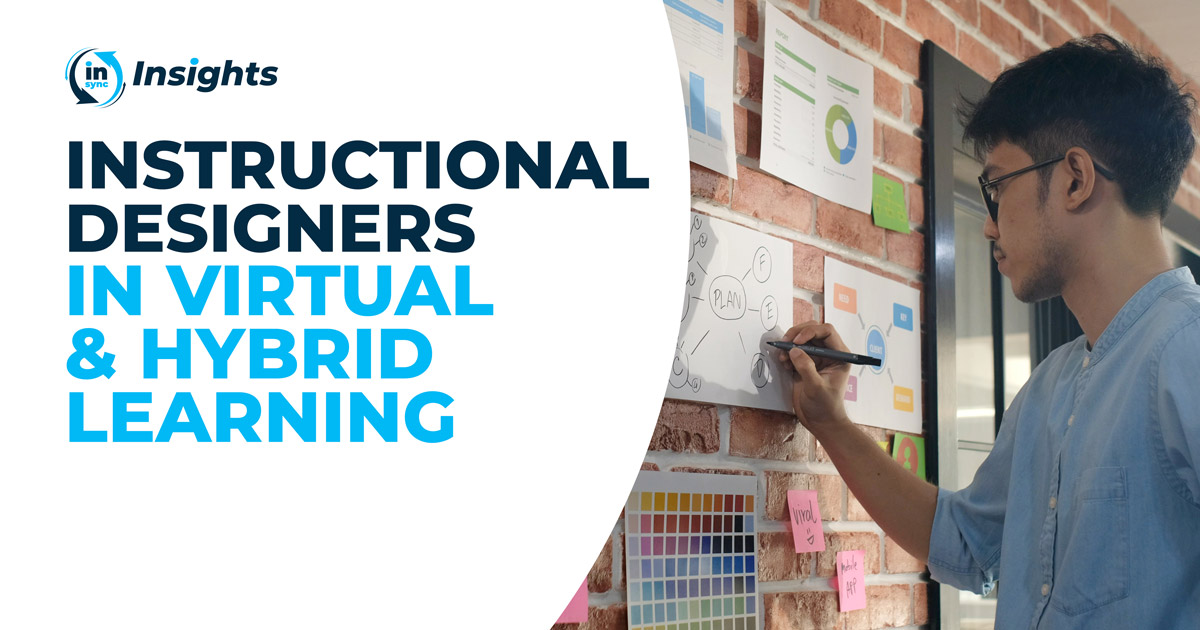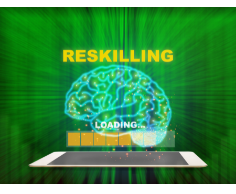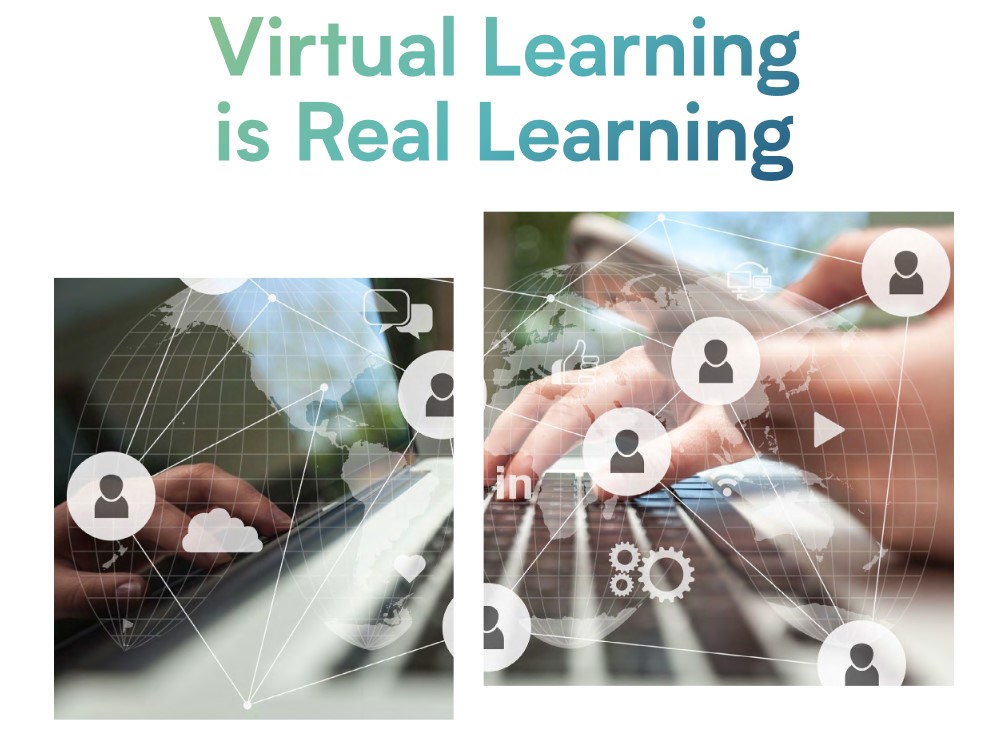The Importance of Specialized Skills for Instructional Designers in Virtual Learning Environments
In the rapidly changing landscape of training, instructional designers stand as the architects of success in virtual and hybrid learning environments. The designer's role is more than just traditional classroom design; they are at the forefront of crafting engaging virtual learning that lasts and making sure that the learning outcomes match business objectives.

Through robust and innovative design strategies, they foster environments that not only engage learners but also ensure long-term skills and knowledge retention. As the custodians of this new era of learning, instructional designers are continually expanding their skill set to adapt and thrive, supporting emerging learning scenarios with a blend of traditional and specialized expertise.
It’s the instructional designer who:
- Ties the content together in a way that produces engagement, relevance, and impact
- Identifies the instructional strategies, techniques, and technologies needed to align learner intent with business goals
- Determines the assessment strategies that identify the success of the program
While instructional design is crucial in any learning environment, its absence or poor quality becomes even more glaring in virtual and hybrid settings.
InSync’s Founder, Jennifer Hofmann says, “If your design doesn’t immediately demonstrate the value of participating live (practice, assessments, collaborative exercises, etc.), learners will mentally (and often literally!) opt out and promise themselves they’ll watch the recording when they need this content. But they probably won’t.”
What is the Role of a Virtual Classroom Designer?
A successful design hinges on the harmony of intentions. By aligning business objectives with the goals of the learning program and the aspirations of the learners, we can craft courses that immerse learners profoundly. This alignment not only guarantees the practical application of acquired knowledge, but it also ensures that the program fulfills business targets.
When crafting for virtual and hybrid settings, instructional designers must:
- Identify the types of learning best suited for online environments.
- Innovate ways to make seemingly ordinary content (like compliance topics) interactive and engaging.
- Transform passive resources like textbooks into dynamic activities.
- Provide essential materials to bolster the rest of the design team.
- Foster opportunities for learners to engage in discussions, leading to enhanced learning experiences.
- Develop evaluations and assessments to gauge the effectiveness of the program.
Virtual Designers, the Instructional Team, and Learner Engagement
Designers collaborate closely with a diverse array of stakeholders, including learners, business sponsors, HR professionals, management, subject matter experts, virtual classroom facilitators, producers, coaches, graphic designers, and eLearning developers—essentially anyone with vested interest in the program.
Each stakeholder brings distinct priorities and expectations, and the learner's needs might not always be their primary focus. Hence, in their interactions with the team, designers must:
- Prioritize the learner to ensure that all learning experiences are genuinely learner-centric.
- Possess an in-depth understanding of learner engagement, enabling them to validate their solutions with science-backed facts for other stakeholders.
- Frequently present a business case to support design intent.
- Articulate their reasons for decisions such as conducting live virtual classes, limiting participant numbers, investing in specific software, or any other significant choices.
The Three Fundamental Engagement Objectives of Virtual Instructional Design
Learner engagement is the cornerstone of every learning environment, and it begins with meticulous design. When developing programs for virtual learning platforms, designers must focus on:
- Stimulating Intellectual Engagement: This requires a thorough understanding of both the learners' intentions and the business motivations driving the content. Designers must weave these elements together in a meaningful and impactful manner. Armed with clear goals and objectives, they should craft programs that empower learners to achieve these objectives and apply them in their daily lives.
We recommend adopting an inquiry-based approach to learning and creating activities that empower learners to steer their own professional development journey.
This method encourages students to ask questions and investigate real-world problems, fostering curiosity and critical thinking skills. It involves a range of classroom practices that promote learning through guided and independent exploration.
The approach not only focuses on solving open-ended questions or problems but also encourages experiential learning and problem-based learning. By posing, investigating, and answering questions, students engage more deeply with academic content, making virtual learning an active and sustainable process
- Nurturing Emotional Engagement: Designers need to incorporate opportunities for emotional engagement directly into the program design. Activities should not only be enjoyable but also promote universal participation. Virtual classroom facilitators require guidance to actively foster a safe environment where they value and appreciate all contributions.
- Fostering Environmental Engagement: Understanding the potential learning environments that both learners and the instructional team might encounter is essential. Designers must familiarize themselves with the virtual classroom environment - its appearance and functionality, whether learners are at their desks, on mobile devices, or in meeting rooms.
They need to envisage the live online learning environment from the perspectives of the facilitator and producer while crafting activities and clear instructions that cater to everyone.
Designers create opportunities for learners to interact with the environment - not just limited to the virtual learning platforms but also including interactions with the instructional team and other learners.
Three Significant Challenges Encountered by Virtual Classroom Designers
Instructional designers face a unique set of challenges and responsibilities. From designing learner-centric programs to dealing with an array of stakeholders, their role is crucial in shaping effective and engaging learning experiences. Here are the three challenges that I need to manage daily.
- Mastering the Art of Saying "No": A significant part of a virtual designer's role often involves asserting their expertise and resisting the use of inappropriate tools. It is crucial to say "no" when asked to use an ineffective tool or costly app that simply won't deliver the expected results. This may sometimes involve disagreeing with experts, which can be challenging but necessary. Emphasizing quality over quantity is key: resist the urge to overload a lesson with content at the expense of valuable teaching moments and experiences.
- Recognizing When It's "Good Enough": This doesn't mean settling for mediocrity. The temptation to continuously revise materials can be overwhelming, but designers must know when to draw the line. Consider feedback from facilitators and learners, but only after a substantial period and only if it's valid. It's so tempting to just keep making changes. For example, with frequent software updates, designers must discern when to refresh all screenshots or when it's better to hold off.
- Embracing the Unknown: It's impossible for designers to know everything. There will be instances where information about learner intent, virtual learning platforms, or team needs may not be fully clear. To mitigate this, provide as much detail as possible, including agendas, checklists, technical instructions, learner materials, engaging slides, and resources. The entire instructional team uses these details to identify and address unknowns before delivery.
3 Rewards for Virtual Designers
Few things are as satisfying as the successful completion of a well-executed project. Here are the aspects I find most rewarding about designing instruction for live online learning:
- Affirmative Responses from Team Members: It's tremendously fulfilling when the facilitation team reviews a design and is eager to deliver it. As a designer, you've excelled when you equip facilitators with everything they need to deliver a superb program and provide producers with all they require for smooth operations.
- Learner Feedback: There's immense satisfaction in receiving feedback that the program was coherent, met its objectives, and aligned with the learners' intentions. If the design team operates seamlessly behind the scenes, unnoticed by the learner, that's a positive sign!
- Sponsor Feedback: The contentment derived from knowing that sponsors or leadership teams value the training program because they witness tangible results on the job is priceless. Achieving the performance goal is signified when you consistently apply a program's learning objectives back to the workplace, no matter who facilitated it, which platform was used, or who participated.
There’s more to learn!
Continue your personal learning journey with InSync Training by becoming a Master Virtual Classroom Designer and learn to:
- Transition from webinars to genuine learning experiences, designed for real engagement. Learn how to weave collaboration, accountability, and assessment into your programs to create rich learning experiences.
- Discover how to create comprehensive materials that enable your virtual facilitation team to apply adult learning principles and stimulate intellectual engagement.
- Facilitate authentic connections to foster emotional engagement, using technology to enhance environmental engagement.
Earn your Virtual Classroom Design Certification today! Sign up for InSync's Virtual Classroom Design Mastery certificate program and become an expert in fostering engagement and creating dynamic virtual learning experiences. Take the next step in shaping impactful virtual classrooms.
 Jennifer Lindsay-Finan
:
Sep 17, 2023 8:08:00 AM
Jennifer Lindsay-Finan
:
Sep 17, 2023 8:08:00 AM




